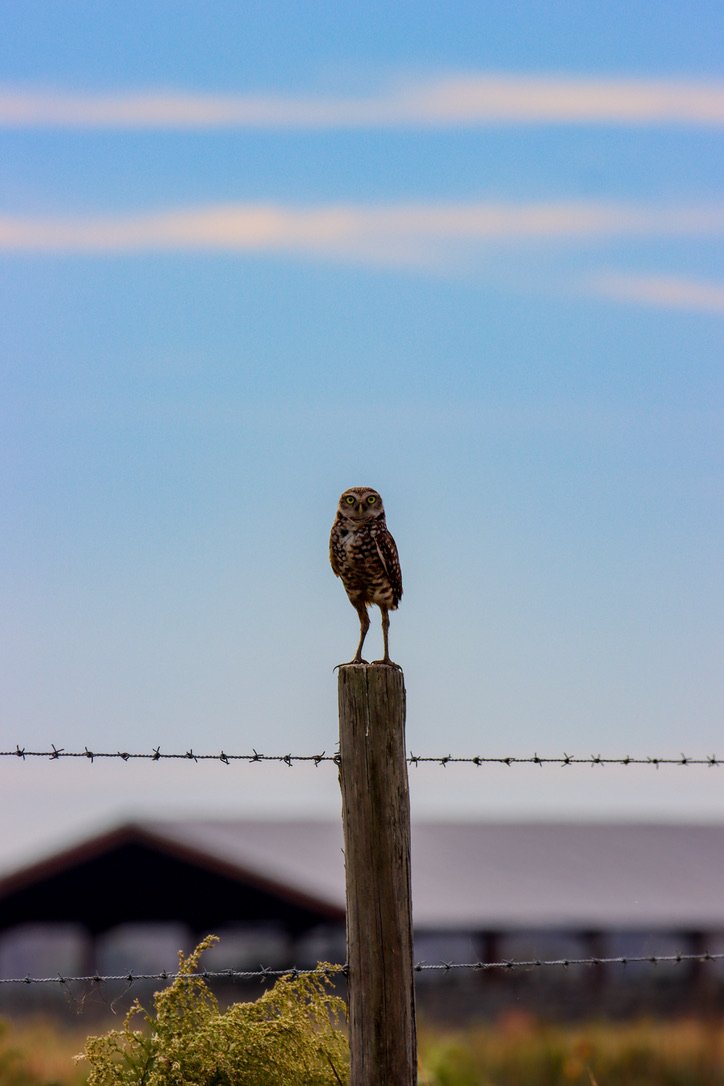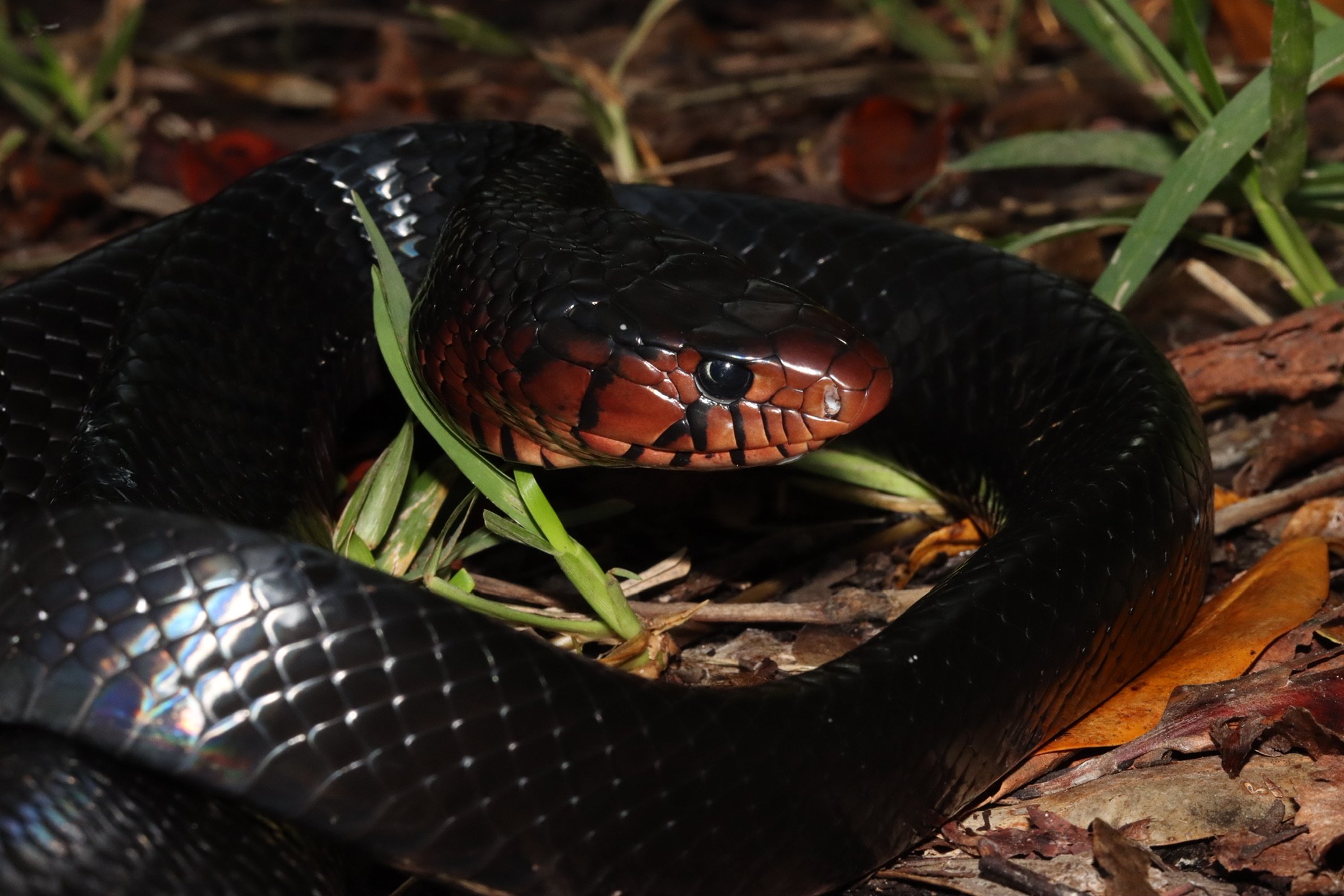I completed a contractual work assignment at the end of November 2023 and decided I was well overdue for an exciting herping trip, so I embarked on a tour of the southeast. I packed up my car with the minimum essentials I would need to camp for the next few weeks. I left Pennsylvania early in the morning and was able to make it all the way down to South Georgia by the end of the day
Georgia and Florida Trip Report 2023
I began my day early in south Georgia and was blessed with some crisp warm weather. Surprisingly, I encountered only one reptile all day which just so happened to be one of the most enigmatic species of the southeast- the eastern indigo snake (Drymarchon couperi).
Eastern indigo snake (Drymarchon couperi)
Eastern indigo snake (Drymarchon couperi)
With the wind in my sails, I pushed forward to make it all the way to the Lake Wales Ridge of Florida by the end of the night. I began early the next day by herping a proposed development site cut amongst some rare and pristine scrub habitat- an all too common occurrence in Florida. This development site had been abandoned for some time and eventually became the community dumpsite. Now riddled with heaps of garbage it has become a popular site for herpers who aren’t afraid to get their hands dirty. Flipping some choice garbage turned out to be very rewarding. I encountered several coachwhips and unique lizard species. Many mole skinks (Plestiodon egregius) and Florida sand skinks (Plestiodon reynoldsi) were found hiding beneath garbage and at the bases of trees. The most exciting find while at this location was a 6 ft+ coachwhip hiding inside a shabby folded blanket.
Eastern coachwhips (Masticophis flagellum)
Florida Sand Skink (Plestiodon reynoldsi)
Mole skink (Plestiodon egregius)
Florida king snake (Lampropeltis getula)
Scarlet king snake (Lampropeltis elapsoides)
The Florida Cane Fields
The Florida cane fields is an enormous swath of land comprising much of Glades, Hendry and Palm Beach County. This expanse of land is owned almost entirely by U.S. Sugar and consists of decimated habitat replaced with a monoculture of sugar cane crop. Driving through the heart of the cane fields you are immediately greeted by the sweet smell of death. 150,000 acres of cane are burned every year producing carcinogenic emissions accompanied by a noxious sweet smell. Unsurprisingly, the vast majority of residents and laborers of the area are poor persons of color.
Several countries have taken initiative to ban sugar cane burning since there is strong evidence suggesting harmful effects for individuals exposed to these emissions, yet this area of Florida remains in stasis. While this entire industry is easily condemnable by the vast inconsideration and destruction of natural habitat, it is also an appalling humanitarian crisis. Palm Beach County has a disturbing dichotomy in wealth- on one end of the county Pahokee and Belle Glade are the two poorest cities in Florida while Palm Beach is one of the richest cities in Florida.
Nonetheless, the cane fields of Florida remain a destination for field herpers. This area is known to be inhabited by florida king snakes (Lampropeltis getula floridana) a subspecies of the eastern king snake. Florida king snakes are popular amongst hobby snake keepers since they sport several unique patterns. Some individuals speculate that the cane fields increased the population of florida king snakes in that area. An abundance of rodents associated with agriculture could increase the population of snakes in the area.
Crested Caracara
Burrowing owl
Eastern meadowlark
Little blue heron
After experiencing a full day in the cane fields, I decided to head for a much more pristine and well managed part of the state. I headed further south to visit Okaloacoochee slough WMA, Dinner Island Ranch WMA and the Big Cypress National Preserve. I spent much of my time down here hiking to some unique hardwood hammocks and observing many of the iconic bird species. Of course I was also hoping to incidentally come across a diamondback rattlesnake but it didn’t pan out.
Fox squirrel
Wood stork
Black-crowned night heron
Flooded grassland habitat
Purple gallinule
Red-shouldered hawk
Burrowing owl
Tricolored heron
Anhinga
Great blue heron
While I had nothing short of a great time photographing birds, I yearned for the cold blooded company of some snakes… I was able to get on some evening movement while road cruising down in Big Cypress.
Florida scarlet snake
Corn snake
While I wasn’t entirely skunking out, I could definitely feel the pace of my trip slowing down after such an electric start. I decided to clear my reptilian brain by taking a day trip to the Seminole Reservation museum. I was most intrigued at the museum by the high regard that the indigenous peoples held for the native wildlife- even naming many of their tribes after various iconic species. In the museum I came across an informational brochure providing information and pictures of the eastern indigo snake. Although I was fortunate enough to already have seen one at the beginning of my trip in Georgia, being able to witness one in Florida would really be an experience. After finishing my day up at the museum I took another long drive all the way down to Flamingo, located in the southernmost district of Everglade National Park. Stepping out of my car to relieve myself before going to bed, I was given a warm welcome by the mosquitoes… game on
Florida cottonmouth
Seminole museum boardwalk trail
As soon as I woke up the next morning, I began armoring up to prepare myself for the fierce wrath of Everglades mosquitoes. I made my way to my first trail of the day, sat for a short while eating some oranges and then began hiking just as I thought the temperature would be right. No more than 100 feet down the trail, I came across the exact snake I was dreaming of just one day prior. A gorgeous eastern indigo snake laid parallel to the trail in an arrested crawl posture. I pulled out my camera and was able to capture some photos of what may be one of my luckiest snake encounters to date. The individual that I encountered was exceptionally colorful with a strikingly red/coral coloration to its face. I couldn’t help but think about visiting the seminole museum and reading about the indigo snakes the day prior, maybe manifesting is real.
Eastern indigo snake (Drymarchon couperi)
Eastern indigo snake (Drymarchon couperi)
I also came across three dusky pygmy rattlesnakes (Sistrurus miliarius barbouri) this morning. During the day I encountered several everglades racers and two cottonmouths. I was blessed with one more stroke of good luck this day, ending the night roadcruising my lifer eastern diamondback rattlesnake (Crotalus adamanteus).
Dusky pygmy rattlesnake
Loggerhead shrike
Eastern diamondback rattlesnake
After spending a successful two days down in the Everglades national park, I headed back up to the lake Wales ridge. While I was very excited to have found my first eastern diamondback I knew that hiking one in habitat would be much more fulfilling. I started putting in a ton of miles hiking through some pristine saw palmetto scrub habitat. The first morning I found some random flip sites to hit with little success. By the time it was midday I was concerned that the window for hiking snakes was closing. At about 2 pm a seriously cloudy front rolled in and I was reignited by the chance to find a basking snake. Rounding the corner of a large assemblage of saw palmetto, I happened upon a female diamondback rattlesnake in an arrested crawl. Immediately it recoiled its body and began to rattle. I was over the moon excited to be able to photograph this individual in such a striking iconic pose. all of a sudden, I began to hear the sound of another rattle just yards away. A pair of diamondbacks! The large male was sitting quietly in proximity until my excitement arroused its concern. The male was what appeared to be all of ~4 ft long and strikingly patterned. I was also able to get some of my favorite field guide shots of a beautiful young coachwhip.
female eastern diamondback rattlesnake
Male eastern diamondback rattlesnake
Eastern coachwhip
Feeling excessively bold after finding many of my noteworthy targets in the southeast, I pushed my luck to search for the Florida short tailed snake figuring that I would also have considerable chances of encountering a coral snake as bycatch. An excessive amount of gas and time was spent driving roads with very little success. Finally I happened upon what was the final omen for me to conclude my time in Florida. An all too common sight in the southeast- a decapitated eastern diamondback in a national forest. I took this one in stride and made my way up to Georgia for one last day of herping before making my journey all the way back to Pennsylvania.
Scrub habitat of the lake Wales ridge
Decapitated eastern diamondback
Florida Scarlet Snake
In the home stretch of my trip I finally laid eyes on my first gopher tortoise. It was a long running joke amongst me and my friends that my efforts searching for the gopher tortoise had been in vain for a long time coming. I was very relieved to finally have laid eyes on not one but several. The amount of time I had previously spent searching around gopher tortoise burrows made it feel quite bizarre that I hadn’t seen one until now. It’s very exciting to watch a gopher tortoise speed towards its burrow and then slide down the opening.
My trip went out with a bang, finding another indigo snake, a diamondback and a pretty corn snake all in one morning. The indigo snake was the largest of any of the individuals I had previously seen. It was exceeding 5 ft in length and exceptionally chunky and healthy. The diamondback was hanging out in the same habitat stretch as the indigo- a dangerously ophiophagic neighbor. This day concluded my trip and I headed back to Pennsylvania to begin getting ready for my trip to South America.
Eastern indigo snake #3 of the trip
Corn snake
Juvenile eastern diamondback rattlesnake










































